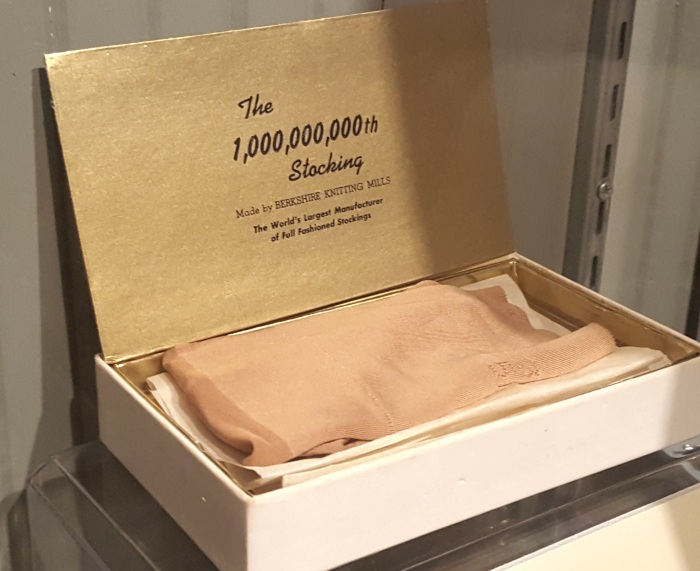During our inventory at the Berks History Center, we recently discovered two U.S. Army hats which are both nearly 190 years old! However, both hats are shrouded in mystery.

The first hat is a style known as a stove pipe shako. While it is missing its original brim and a plume which attached at the top, its condition is surprisingly solid for its age. The emblem on this hat was used between 1833 and 1851 by U.S. Dragoon regiments – horse mounted units that would later be known as cavalry. Unfortunately, that is all we know about this hat. We do not know who used it, and in fact we do not even know how it came to be in our collection.

The second hat is known as a bicorne hat. It is in excellent condition, and we can infer several bits of information from its design. The style of the insignia, for example, was used by the U.S. Army between 1821 and 1851. In addition, the hat is marked with the name and address of its maker: William H. Horstmann & Sons, North Third Street, Philadelphia. It is well documented that Horstmann & Sons only operated at this location from 1830 to 1857.
We know that the Berks History Center received the bicorne hat in 1937, and its donor reported that it belonged to a Major David Hocker. Unfortunately, our predecessors did not record any additional information about this person, and to add to the confusion, they incorrectly recorded the hat as having belonged to “Mayor” David Hocker. To date, we have not yet been able to identify a Major Hocker connected with Berks County or the United States Army.
While there are many questions with both of these hats, they are both unique artifacts. Our hope is that additional research will help us to better ascertain to whom each belonged and how each is connected to Berks County.
Article Researched & Written by Bradley K. Smith










